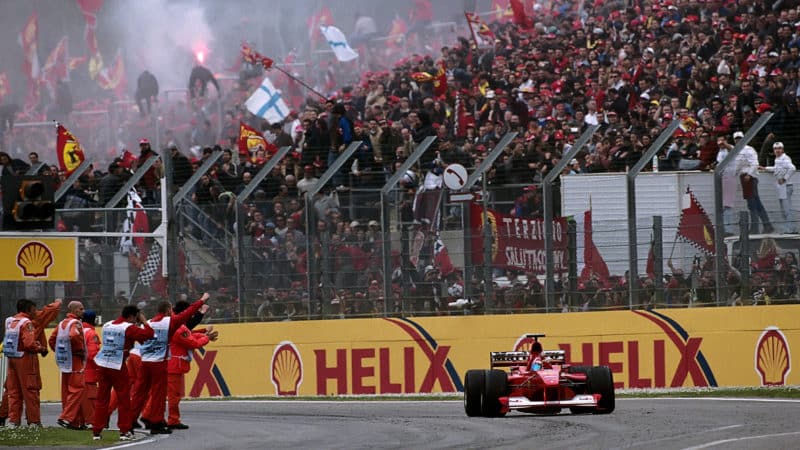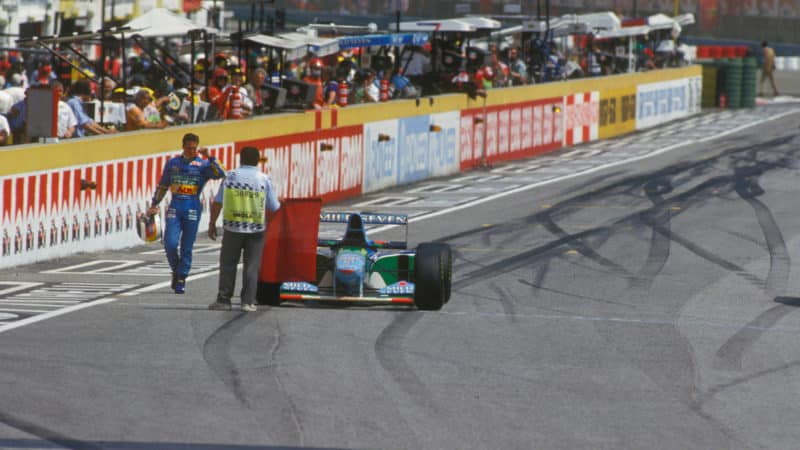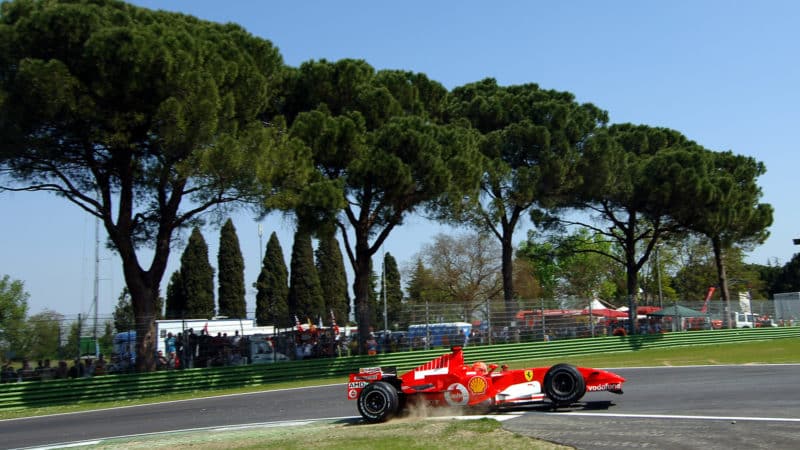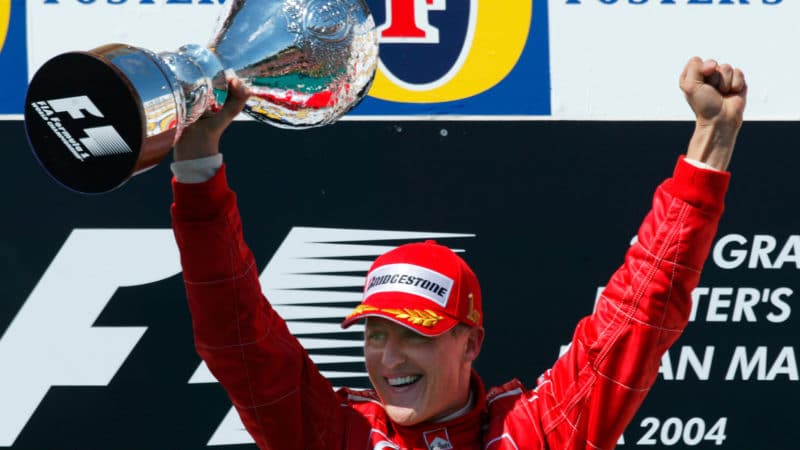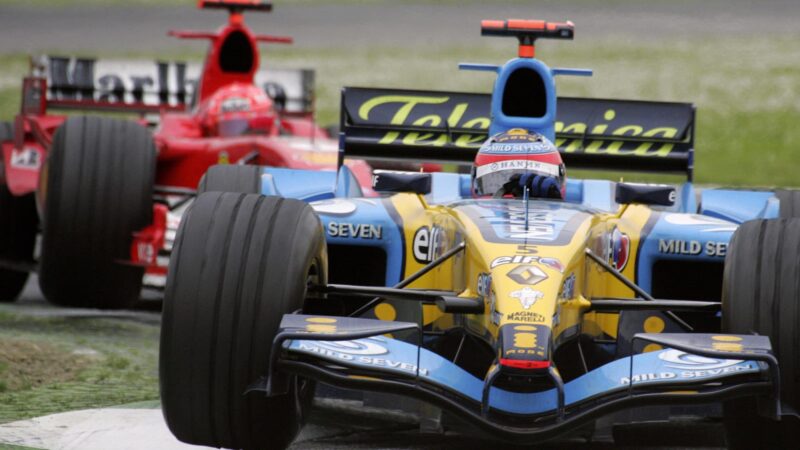“It had a really good chassis and a very driveable engine,” he says. “[The Ford-Cosworth V8] definitely wasn’t as powerful as the Renault, as we’d find out when we got the V10 in 1995, but you could build a very nice car around it. And the aerodynamics were very benign, so it was dead easy to set-up. You could tune it to the circuit very quickly and it looked after its tyres. It really was a good car. When you try to make your aerodynamics benign – by that I mean not very peaky or sensitive – you often have to give away a bit of downforce to do it. But actually the 1994 car had as much, if not more, than any of its contemporaries.”
Schumacher never was fallible though, was he? He dropped his Benetton early in the 1995 race having just switched from wets to slick tyres, but took his first Ferrari pole position in ’96 despite now living with a clear car disadvantage compared to Williams. A trio of second places between 1996-98, beaten by Damon Hill, Heinz-Harald Frentzen and McLaren’s David Coulthard respectively only augments his status and consistency through the decade, before Mika Häkkinen gifted him a second Imola victory in 1999 by spinning out of the lead. By 2000, fully recovered from the broken leg sustained at Silverstone the previous July, Schumacher claimed an Imola trio – and a straight hat-trick for the season as pole winner Häkkinen lost out on strategy. A clean pass for victory was rarely the story at Imola – although that was the case at most circuits back then. Lest we forget, ‘the show’ has been much improved in this modern era, even before this new aerodynamic reset, thanks largely to the advent of dreaded DRS.
Brother Ralf Schumacher scored an emphatic maiden victory for Williams-BMW in 2001, on Schumacher’s ‘turf’ – he really was world-class when the stars aligned – but a run of three Imola victories on the trot began for Michael in 2002. That year and in 2004, Schumacher and Ferrari domination almost throttled the life out of F1 as he racked up his astounding tally of statistics. We’d never have guessed then that anyone would ever match, never mind surpass, such supremacy.

Schumacher speeds to victory in ’99, past a walking Ḧakkinen
Patrick Hertzog/AFP via Getty Images
A fantastic tactical game with Fernando Alonso and Renault brought a hard-fought final Imola win in 2006 during the last year of his ‘first’ F1 career – but the Schumacher-related San Marino GP that really sticks in the mind the most was his defeat in 2005. Funny how near-misses often stand out above the (many) victories.
That 2005 race was among the best ever seen at Imola. Kimi Räikkönen led early on in Adrian Newey’s rapid McLaren MP4-20 until a driveshaft failure spoilt his day. As Alonso picked up the lead, Schumacher rose from P13 on the grid to reel in the Renault, making up more than 30 seconds. What a performance, in a season when he was mostly hobbled by the one-off no-tyre stop rules that threw Ferrari and Bridgestone. The final 11 laps, as Schumacher hounded a cool-headed Alonso, was compendious of F1 back then: fantastic cars powered by the squalling last-generation V10s, that were also near-impossible to race even for the world’s finest drivers. Never thought I’d say this, but thank goodness for DRS…
